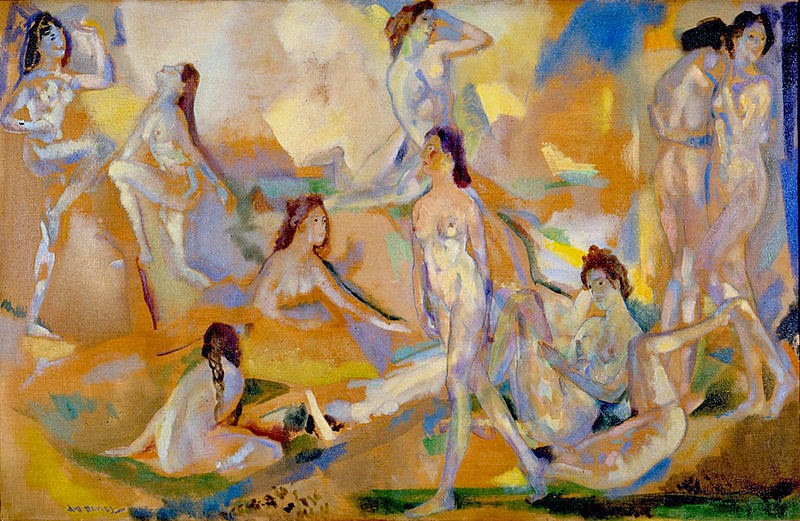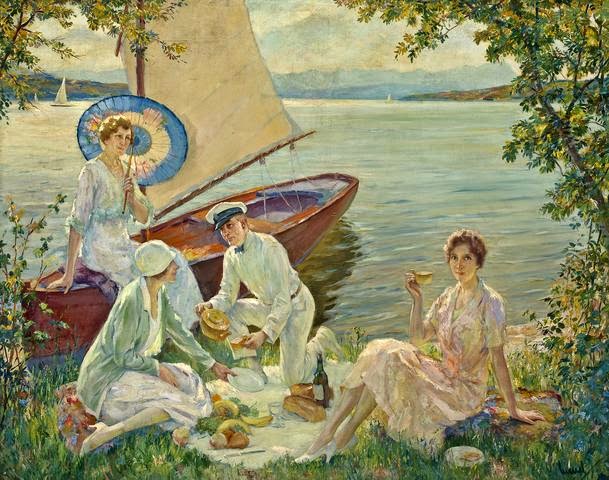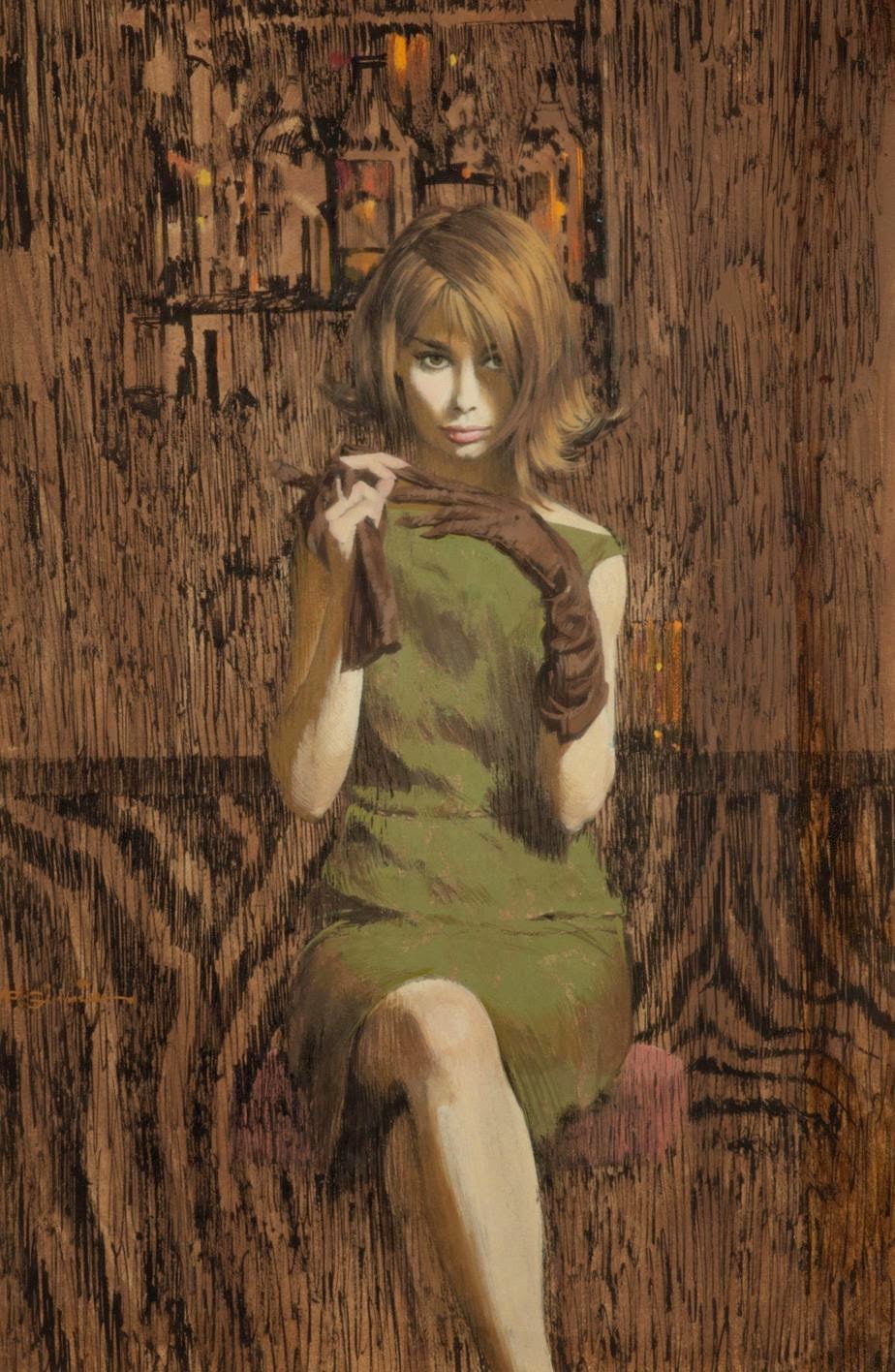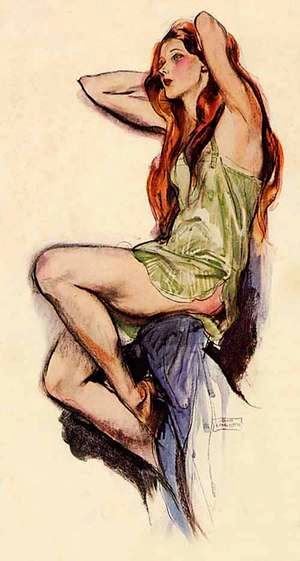This is the cover of a recently published
book about illustrator Robert McGinnis (1926- ) and his works.
And
this is another book dealing with McGinnis by the same author that was published in 2001. I happen to happen a copy of each, so they will be dealt with in this post. A brief Wikipedia entry on McGinnis is
here, and his Web site is
here.
McGinnis is what is called an "all-rounder" in that he can depict almost anything well -- landscapes, cars, sailing ships. Also, by the way, lanky, sensuous, intelligent and fascinating women -- usually lacking in clothing. He painted hundreds of the latter because the major part of his career was doing cover art for paperback books, and a "good" cover from the standpoint of a publisher was a cover that could attract potential readers and entice them to buy the book. Since many paperback books deal with murder mysteries, romance, and such, McGinnis' subjects were usually women. He was very, very good at it.
McGinnis' women almost always are tall, long-legged and well endowed where it counts. They also have distinct personalities. None of the usual cookie-cutter generic pretty girl solutions for McGinnis: his women often had unconventional faces (for instance, Shere Hite was a frequent model early in his career). As the recent book mentions, in many respects McGinnis was doing
portraits.
He generally used gouache or tempera on smooth-surface supports for the book illustrations and worked comparatively small -- about twice the size of the printed version, which is not large where paperback books are concerned.
The recent book has a large format, allowing readers to get a reasonably good feeling for McGinnis' painting style. It also had a Q&A with McGinnis that is brief, but interesting. He reveals what illustrator most influenced him when he was getting started doing book covers and tells who his favorite painter is.
One defect of the new book is that reference photos are nearly absent. Another is that nothing is said regarding his technique or approach when making book cover illustrations, though some study sketches are included. Moreover, McGinnis is a skilled colorist, and his thoughts on that would be very useful to learn. Admittedly, these matters are mostly of interest to fellow artists, and perhaps the book was intended for for non-artist McGinnis fans.
The earlier book has a few more reference photos, but they are tiny. And many illustrations and book cover images are small. Again, nothing much on how McGinnis worked. Still, the earlier book is interesting and useful for the likes of artistic McGinnis fans such as me.
Gallery
Never Kill a Client - cover art - 1963
Strange, interesting background here. Did he draw it in pen and ink and then paint a wash over it?
Murder Me for Nickels - cover art (cropped at the bottom) - 1960
Again, plenty of interesting textural effects.
Girl on the Tower - Saturday Evening Post - 24 September 1960
At this point, even the Post was allowing a casual, partly unfinished style for story illustrations.
Slab Happy - cover art - 1973
A subject without a conventionally pretty face. The new book includes a reference photo showing that McGinnis did indeed portray his model's face -- but enhanced her elsewhere.
Some Like It Cool - cover art - 1962
Did I just mention that McGinnis was a skilled colorist?
John Wayne in "The Searchers"
He didn't always paint pretty girls, even when doing movie industry work.
Guideposts magazine illustration
This hints at his landscape style.
The Return - cover art
A rather unusual McGinnis here. Aside from the treatment of the church and hills in the background, it looks like he was suffering from Bernie Fuchs envy.
%2B-%2B1906.png)










.jpg)


































%2B-%2Bc1890.jpg)






